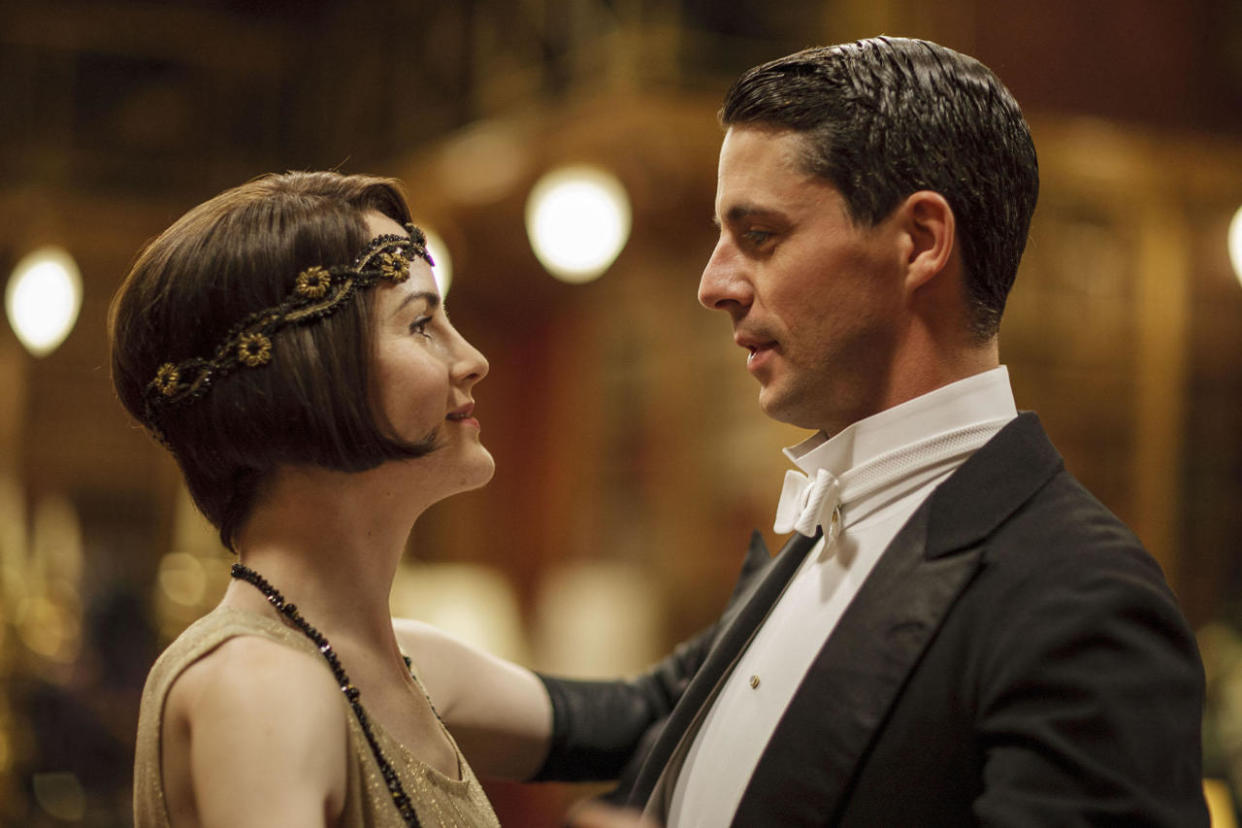'Downton Abbey' Review: Come Together

It’s 1925 in Downton Abbey as the sixth and final season begins on Sunday night, and the dead dog Isis is, reassuringly if somewhat eerily, still seen trotting toward the stately pile in the opening credits. The theme of the season, stated as loudly as one of the Dowager Countess’s window-rattling harrumphs, is that 20th-century modernity has finally, and now with even greater speed, penetrated the Downton families, both upstairs and downstairs. WARNING: SOME MINOR SPOILERS FOLLOW FOR THE SUNDAY SEASON PREMIERE OF DOWNTON ABBEY ON PBS.
In what will become a recurring subtext of the season, dialogue referencing the shifting culture inhabited by the Crawley family does double-duty as meta-commentary on the conclusion of the series: “I’ve begun to question how long we can go on with it all,” said Lord Grantham, who adds a bit later, “These are days of uncertainty.” That last line must have resonated with the executives of PBS, trembling with fearful sorrow over the prospect of ending what is likely the biggest prime-time cash-cow the network has ever seen.
Related: ‘Downton Abbey’ Cast and EPs Talk Romance, Resolutions in Final Season
Show creator Julian Fellowes writes, as always, every episode — and so quality-control is mingled with a by-now familiar mixture of melodrama, laugh-lines, and a scarcely-disguised nostalgia for a time in British history when People Knew Their Place. It’s that class-consciousness that irks Downton Abbey’s more contemptuous critics — the very same stuff that seems so exotic and welcome to American fans, who long for order of all sorts.
The opening hour is a good one for downstairs lovebirds Mr. Carson and Mrs. Hughes, who are brought ever-closer together. By contrast, however, I confess to having no more patience with the perennially droopy maid Anna; it’s become increasingly difficult to believe Mr. Bates’ continued adoration of a wife who can only see the storm cloud in every silver lining, and the introduction of yet another obstacle to their happiness struck me as eye-rollingly trumped-up for the final round of episodes.
Upstairs, I’m happy to report that Lady Mary remains as tartly sarcastic as ever — indeed, perhaps more caustic than any other character in any other season of the series. Even the Dowager Countess, whose authority at the local hospital is being challenged by her perennial foil, Isobel Crawley, cannot match Mary for sheer, compulsive spitefulness. And I should add that Lady Mary is probably my favorite character in the show, in part because she’s more interestingly strong, overbearing, and healthily neurotic than the kind hearts around her. (The Sunday-night, Good Wife-Downton crossover-audience will be pleased when Matthew Goode reappears as the Mary-eager Henry Talbot later in the season.)
As the final season progresses, look for Lord Grantham to become the show’s secret weapon for boisterous humor — it’s great to see Hugh Bonneville go out with his role written more fully-dimensional. And this season will also prove to be one that pivots in part upon the redemption of one of the show’s heretofore least likable characters, the sadistically-tempered underbutler Barrow.
When Downton premiered in 2010, it commenced with 1912 news that the Titanic had sunk; later this season, the big house gets a 1925 visit from Neville Chamberlain. Spanning 13 years in six, Downton Abbey has managed to hit many historical beats while remaining cozily ensconced in the kind of fictional British world that brings out the Anglophile in so many Americans. While the upcoming season is uneven — there are a few awfully wobbly moments in the saggy middle hours — the series is well on its way to going out in a manner that will have its fans sweetening their cups of tea with salty tears.
Downton Abbey airs Sundays at 9 p.m. on Masterpiece on PBS.


